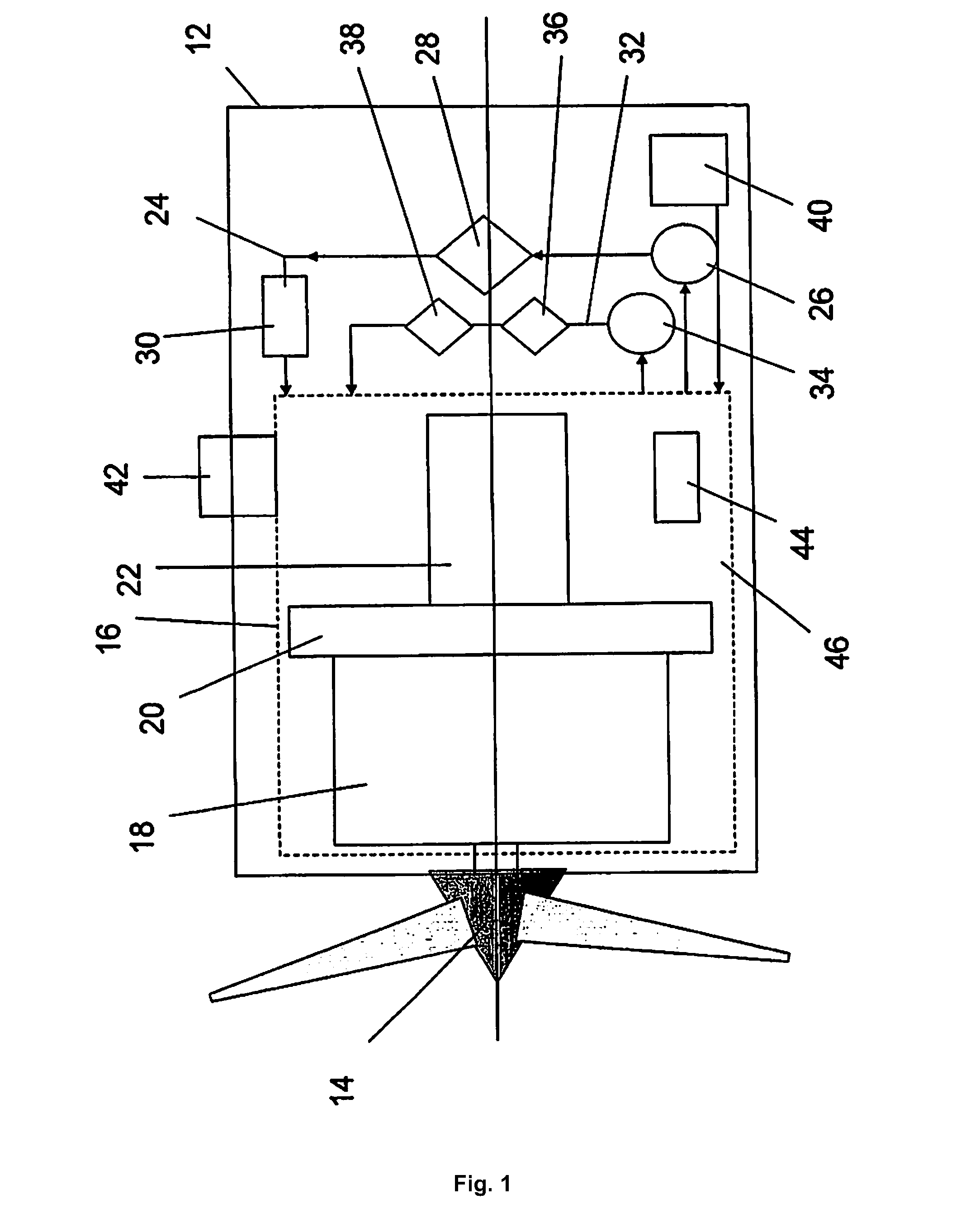Wind Turbine Gearbox Lubrication System
a technology of lubrication system and gearbox, which is applied in the direction of wind energy generation, liquid fuel engine components, non-positive displacement fluid engines, etc., can solve the problems of boundary lubrication conditions, less than adequate lubrication, contact fatigue, etc., to reduce or eliminate the effect of lubricant viscosity, lubricant viscosity reduction, and low viscosity
- Summary
- Abstract
- Description
- Claims
- Application Information
AI Technical Summary
Benefits of technology
Problems solved by technology
Method used
Image
Examples
Embodiment Construction
[0041]The following is a description of a prophetic embodiment of the invention, given by way of example only and with reference to FIG. 1 which shows a wind turbine 10 comprising a nacelle 12 and a rotor 14. The nacelle 12 houses a gearbox 16 including a low-speed input stage planetary gear 18, a bearing 20 and a high speed gear stage 22. Further intermediate stages may be present (not shown). As will be understood, the design of such a gearbox is relatively complex but is otherwise conventional and its design is largely unrelated to the present invention. Details of the gearbox design may be found in publications such as Recommendation to Comply with the Technical Criteria of the Danish Wind Turbine Certification Scheme Gearboxes, 2007 Danish Energy Authority or the Vestas Mechanical Operating and Maintenance Manual V90-3.0 MW, VCRS 60 Hz, 2007.
[0042]In addition to the gearbox 16, the nacelle 12 houses a lubrication circuit 24 comprising an inline pump 26, an inline filter 28 and ...
PUM
 Login to View More
Login to View More Abstract
Description
Claims
Application Information
 Login to View More
Login to View More - R&D
- Intellectual Property
- Life Sciences
- Materials
- Tech Scout
- Unparalleled Data Quality
- Higher Quality Content
- 60% Fewer Hallucinations
Browse by: Latest US Patents, China's latest patents, Technical Efficacy Thesaurus, Application Domain, Technology Topic, Popular Technical Reports.
© 2025 PatSnap. All rights reserved.Legal|Privacy policy|Modern Slavery Act Transparency Statement|Sitemap|About US| Contact US: help@patsnap.com



